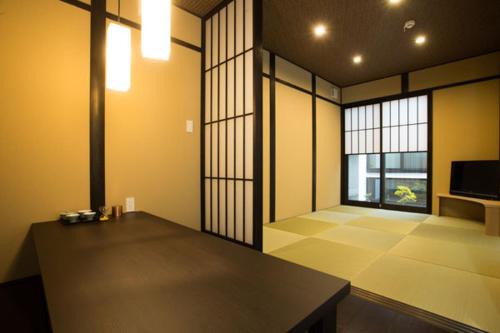Mido Shrine
menuMenu
A historic shrine with a main hall built in the Muromachi period, designated as an Important Cultural Property of Japan. Surrounded by abundant nature, it offers a tranquil and peaceful atmosphere.






Highlights
- The main hall, built in the Muromachi period, is designated as an Important Cultural Property of Japan.
- The grounds contain numerous historically significant structures.
- The surrounding area is nestled in lush mountains, providing a peaceful and tranquil atmosphere.
- The approach to the shrine is lined with pine trees, creating a picturesque scene.
- Beautiful seasonal views can be enjoyed, with cherry blossoms in spring and autumn foliage.
Basic Information
- Address
- 87 Terada-midozaka, Joyo City, Kyoto Prefecture Search for tourist attractions in Kyoto
- Access
- 1km east of Joyo Station on the JR West Nara Line, north of Kyoto Prefectural Joyo High School. A short walk from the Joyo High School bus stop on the Joyo Sansan Bus (Kyoto Kanko Bus). Show route
- Op.Hours
- 9:00 AM to 5:00 PM
- Cld.Days
- None
- Fee
- Free
- INFO
- Parking is available on the shrine grounds and is free of charge. However, the number of spaces is limited, so please use a nearby parking lot if the shrine's lot is full.
Overview
Recommended nearby attractions
Kuse Shrine

A historic shrine boasting a beautiful vermillion-lacquered main hall. Its peaceful and tranquil atmosphere is perfect for relaxation and rejuvenation.
Uda Mimizu Shrine

A stunning shrine with three identical main halls designated as National Treasures, built in the late Kamakura period.
Kifune Shrine

Kifune Shrine is one of Kyoto's leading sacred sites for water deity worship. Experience the sacred atmosphere in a tranquil space embraced by abundant nature. Famous as a matchmaking shrine, it's bustling with people wishing for good relationships. Autumn is particularly beautiful, with stunning autumn leaves creating a magical landscape.
Hirano Shrine

Hirano Shrine, known as one of Kyoto's most representative cherry blossom viewing spots.
Especially breathtaking are its weeping cherry trees, some over 100 years old.
Jingo-ji Temple

Jingo-ji Temple is a historically significant temple of the Tendai sect, established in the early Heian period by Saicho. Registered as a World Heritage site, it's a must-see Kyoto destination where you can experience history and nature amidst beautiful scenery throughout the year.
Shinsen'en Garden

A garden steeped in history and tranquility, once a flourishing kin'en (imperial garden) of Heian-kyō.
Yuki Shrine

Yuki Shrine, a guardian shrine of Kurama-dera Temple, has long been revered by the people. The serene sanctuary nestled in a quiet forest offers a peaceful escape from the hustle and bustle of the city.
Rokusonou Jinja Shrine

A historic shrine enshrining Minamoto no Tsunekiyo, the ancestor of the Seiwa Genji clan. The serene grounds offer beautiful scenery throughout the year, including cherry blossoms and the Shinryuu Pond.
Hyosu Taisha Shrine

Hyosu Taisha Shrine, located in Yasu City, Shiga Prefecture, is a historic shrine boasting a beautiful, nationally designated strolling garden, offering a serene and atmospheric experience.
Shimogamo Shrine (Kamo Miya Jinja)

A cultural treasure of ancient Kyoto with over 2000 years of history. The serene grounds, surrounded by lush nature, offer a tranquil escape from the city bustle. It's also a popular power spot.
Nearby Hotels
Kyoto Uji Cha-gan-ju-tei House

Hotel Trend JR Uji Ekimae

Kyoto Uji Hanayashiki Ukifune-en

Aiso

Uji-Ichibanyado-Nigauri

Tabibitoyado Kirinya Hostel in Uji

Komorebinoyie

Uji Tea Inn

Hotel Sweet ( - Adult Only )

Yodo Castle Inn

